A brief guide about parking stop installation standards!
Parking stops, also referred to as wheel stops and parking blocks, are traffic management tools mostly installed in off-street parking lots, visitor parking areas, and many other parking facilities.
Sturdy structures are installed in front of a parking slot to inform drivers they cannot go beyond the wheel stop when parking their vehicle.
They ensure drivers park their vehicles in their designated area without covering the car-free zone designed for pedestrians. They also decrease the chances of vehicle-to-vehicle collisions that may occur when cars are parked in a tighter space.
When installing parking stops in your parking spaces, ensure you follow the local installation standards to avoid penalties and other issues.
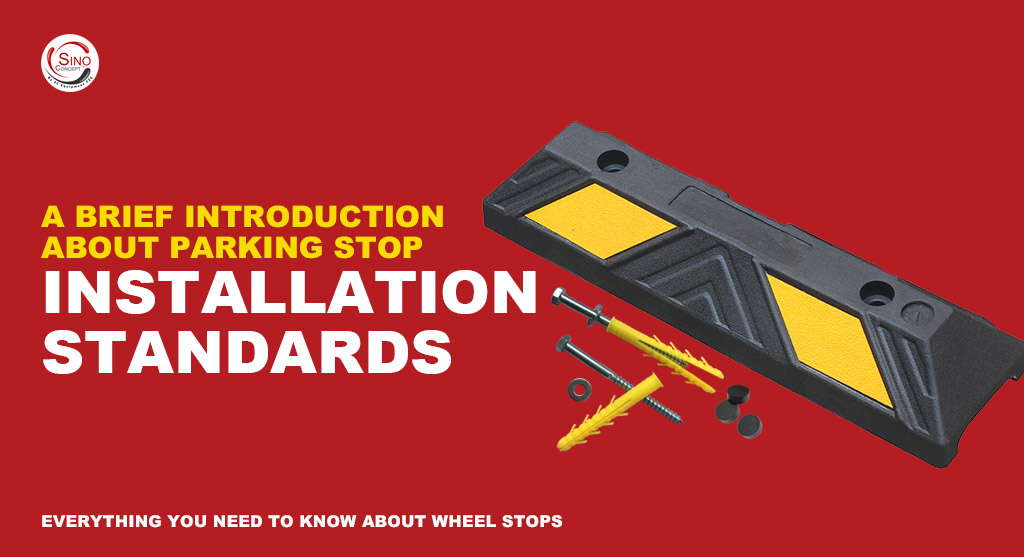
How to install rubber parking stops?
Rubber parking stops are lightweight, which makes them easy to carry in a parking space.
Unlike steel or concrete parking stops, you will not need loading trucks to place them in your large parking lot during installation. This makes rubber parking stop installation easier and less time-consuming.
If you are a DIY person and know how to use a hammer, drilling machine, and similar tools, you may wish to install rubber parking stops in your on-street parking garage or other options.
If so, the guide below will tell you how to install a parking stop like professionals in simple steps.
- Step 1: Get a parking stop that meets your parking facility or parking spot requirements. Gather other instruments that you would need during the installation procedure. These instruments include a hammer drill, hammer, screw, and socket.
- Step 2: Mark your chosen area with chalk.
- Step 3: Place the parking stop over the selected area and mark its screw hole’s location on the ground.
- Step 4: Create holes in the ground using a hammer drill.
- Step 5: Clean the pavement with a hand broom. It will help you create an even surface for the wheel stop installation.
- Step 6: Using a hammer, place a plastic hole plug inside each hole.
- Step 7: Place the parking stop on the ground and secure it on the floor with the help of screws. Tighten the screws with a socket.
You can display signage to warn drivers and pedestrians of their presence beforehand. You can also mark the parking slots to make parking stops more prominent and effective.
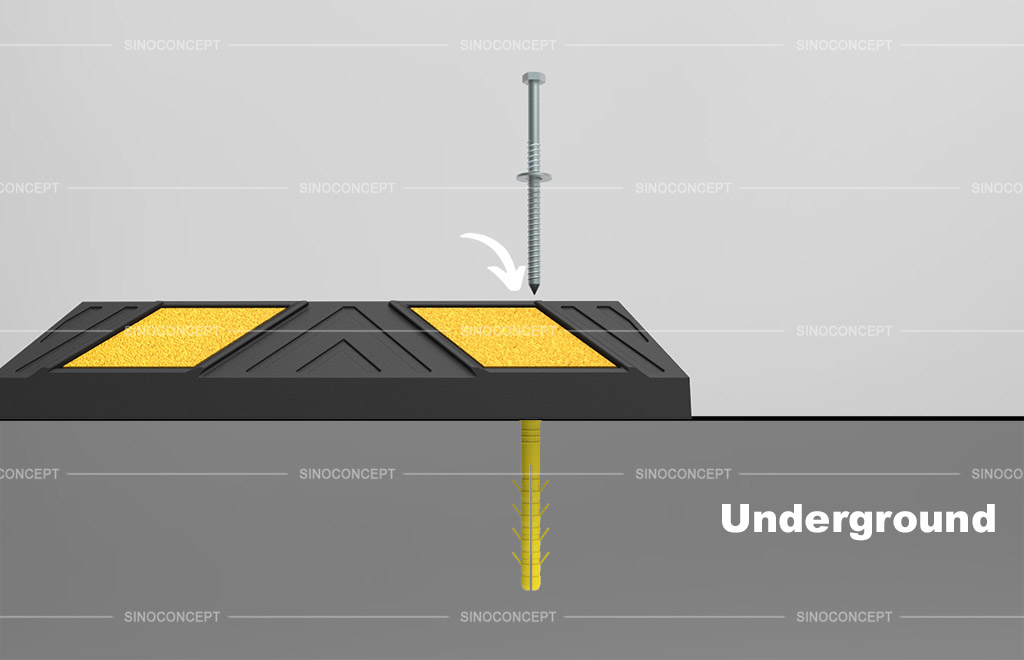
Learn more: How to install rubber parking stops?
How to remove a parking stopper?
Parking stoppers need to be removed when they are no longer functional in reserved parking, overnight parking, motorcycle parking, street garage, metered parking, or public parking structure.
You can replace damaged parking blocks with advanced and effective marking stops to make your accessible parking garages safe again.
If you want to remove a parking block from your free parking, airport parking, electric vehicle parking, or valet parking spots, you can use this simple and practical guide to achieve your goal.
- Step 1: Put the sharp edge of the chisel under one end of the parking spot and start hitting the chisel with a hammer. Keep hitting the chisel until the parking stop edge separates from the ground.
- Step 2: Repeat the above procedure at the other end of the parking stop.
- Step 3: Place a crowbar beneath the middle of the parking stop and forcefully remove the parking block.
- Step 4: Remove adhesives attached to the ground using a solvent. Clean the area to remove debris and dust.
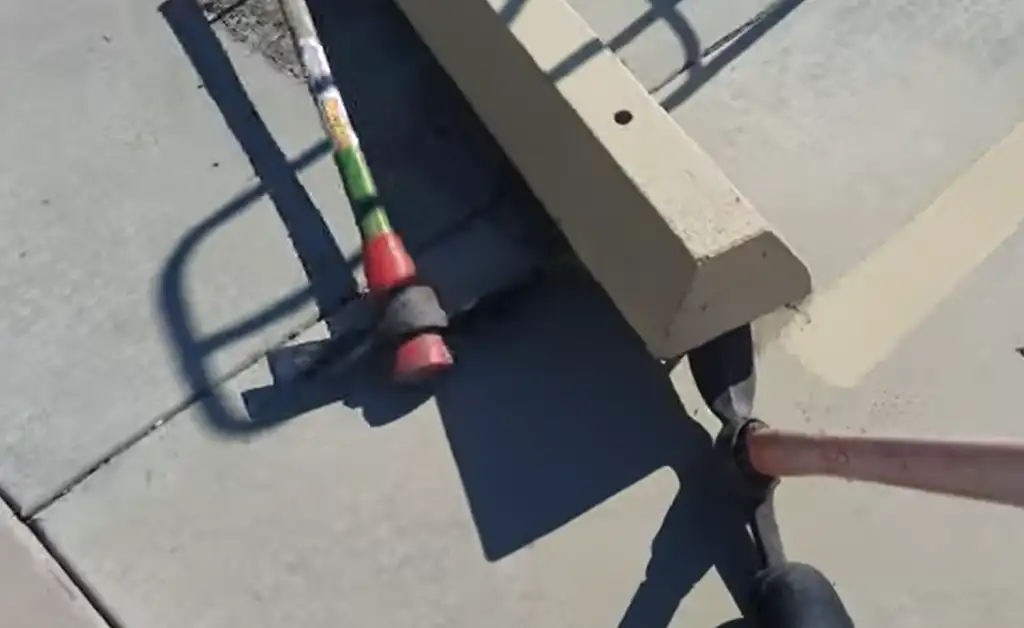
Learn more: How to remove a parking stopper?
You have already read a good part of this article, 👀
We've
got the impression that you like it. 🙂
👇🏻
IF YOU ARE LOOKING TO WORK DIRECTLY WITH A MANUFACTURER,
FEEL FREE TO CONTACT US. WE ARE VERY HAPPY TO HELP!
What accessories are required for wheel stop installation?
Wheel stop installation plays an important role in disabled parking, street parking, garage parking, electric vehicle charging station parking, handicap parking, event parking, and car parking spaces.
You can install them in front of all the parking slots in your parking space to create their boundary. This way, drivers will know when to stop their cars before they hit walls, parked cars, curbs, or parking stops.
Parking stops can manage traffic in several places, like ramps, speed bumps, speed humps, and speed cushions.
When you plan to install a parking stop in your garage parking, driveway, perpendicular parking, daily parking, short-term parking, paid parking, or vehicle parking area, ensure you have the following accessories.
- Hammer
- Hammer drill
- Screws
- Plastic hole plugs
- Socket
- Chalk
- Hand broom
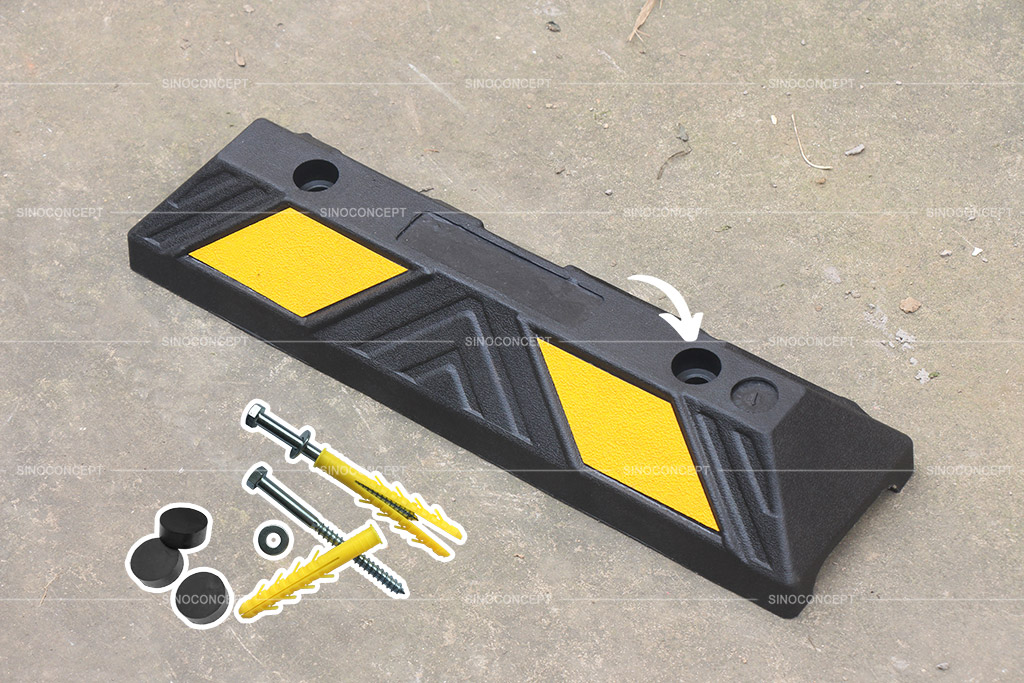
What accessories are required for wheel stop removal?
If the parking stops of your car-parking, monthly parking, handicapped parking, parallel parking or daily parking place have been damaged and you want to remove it to install a newer wheel stop in its place, here are the accessories you will need to have.
- Chisel
- Hammer
- Crowbar
- Shovel
- Hand broom
After removing a parking stop, buy a suitable one to replace the older one. The selected parking stop should be according to the type of vehicles, traffic volume, and other parking space requirements so that you can get the most out of it.
Parking stops are manufactured in different forms that differ from each other based on their colour, material, size, style, and design.
You should select the wheel stop form that suits your needs better. Wheel stop material and dimensions are very important factors that you should consider when buying this tool.
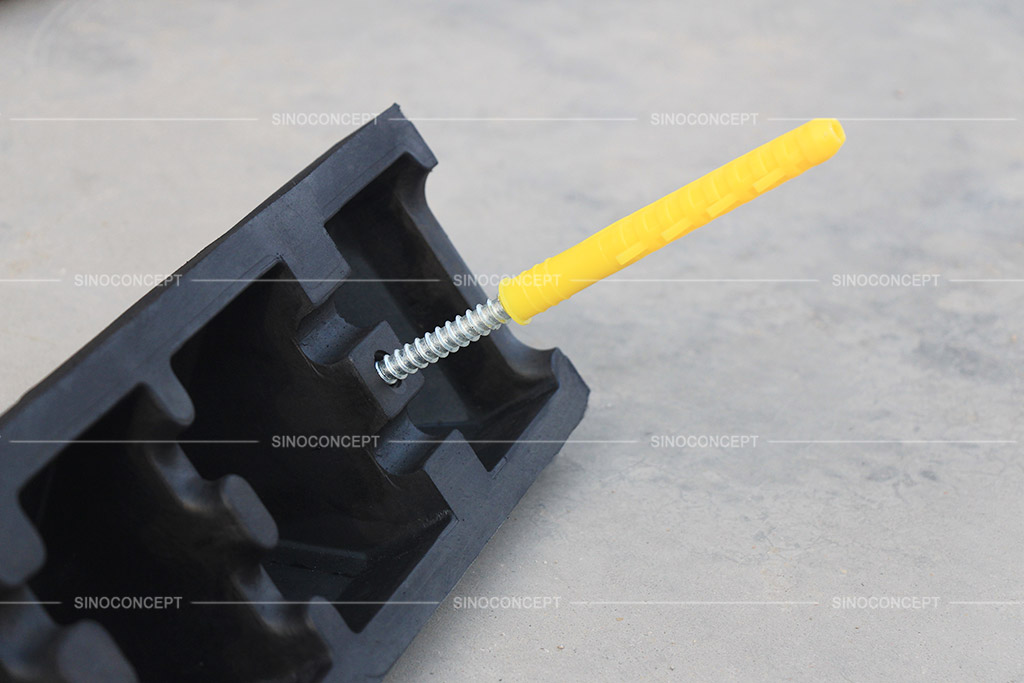
Parking stop installation standards
When you decide to install a parking stop in your garages or parking areas, learn the basic rules and standards about parking stop installation.
They should be at a specific distance from the curb. According to traffic management rules in the UK, parking stops should be 15 to 20 inches away from the curb.
The distance between two parking stops should be at least 3 feet. You should not install them in dimly lit areas because it will increase the tripping risk.
You should also not install them in corners or sites where pedestrian traffic is found instead of vehicular traffic. This will make them ineffective and risky.
Placing signage that informs people of the presence of parking management tools is also a good practice. It will prepare drivers and pedestrians beforehand, and they will become more cautious.
Drivers will reduce their vehicle’s speed to avoid hitting the parking stop, and pedestrians will walk more carefully to avoid hitting their feet on the wheel stop.
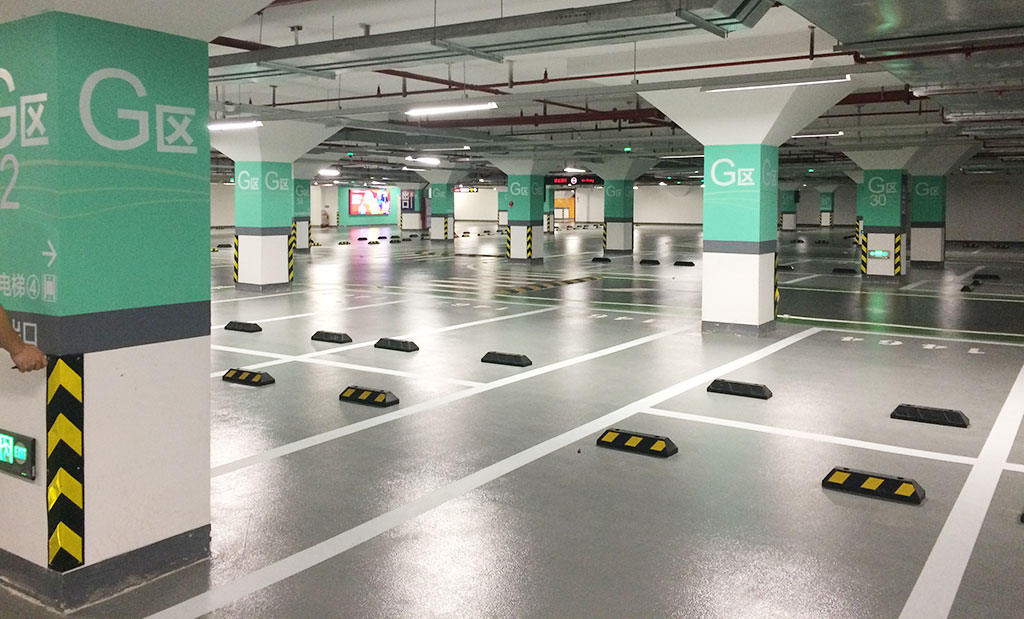
Conclusion
Each local area has its own wheel stop installation rules and standards. You should learn your area’s standards before you actually install wheel stops.
Doing so will help you save time and trouble. These standards are made to improve the safety of parking areas with the correct usage of parking area tools.
Parking stops are a helpful tool you should consider installing in your residential garage, commercial parking spot, or industrial parking lot to provide a safer parking space to drivers and pedestrians equally.
They will improve the safety of a parking space and the management and organisation of your parking lot. Select the right parking stop for your particular parking area to enjoy all the benefits of this tool for years.
👇🏻
IF YOU ARE LOOKING TO WORK DIRECTLY WITH A MANUFACTURER,
FEEL FREE TO CONTACT US. WE ARE VERY HAPPY TO HELP!





















